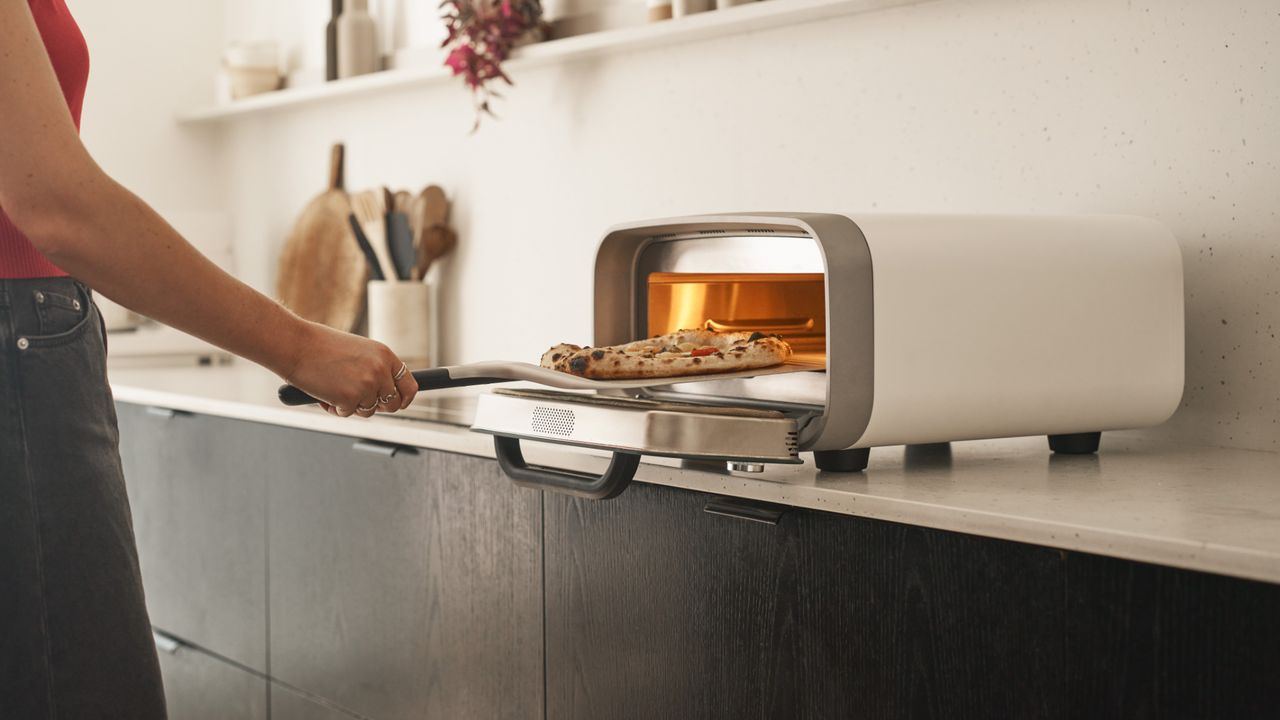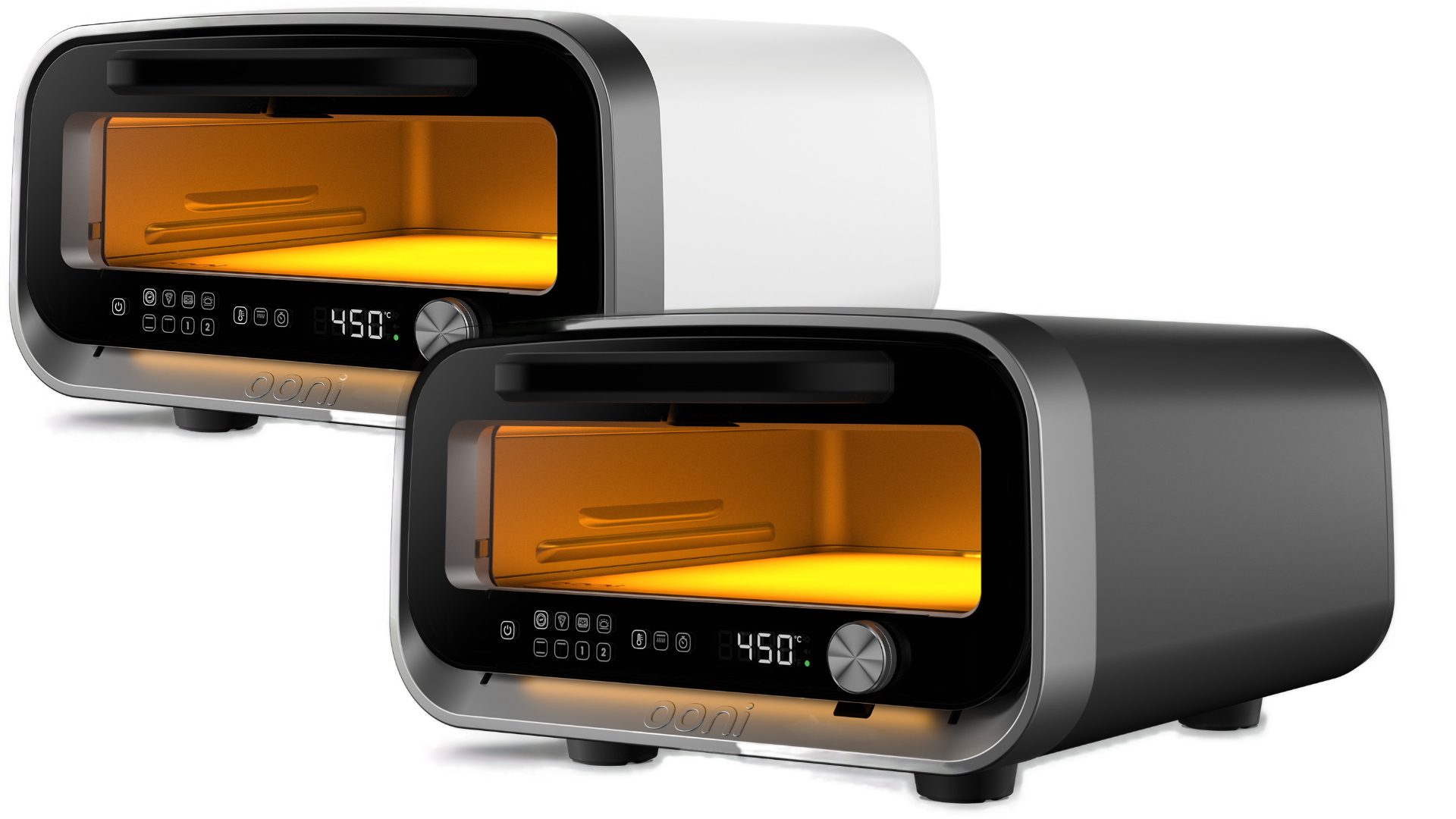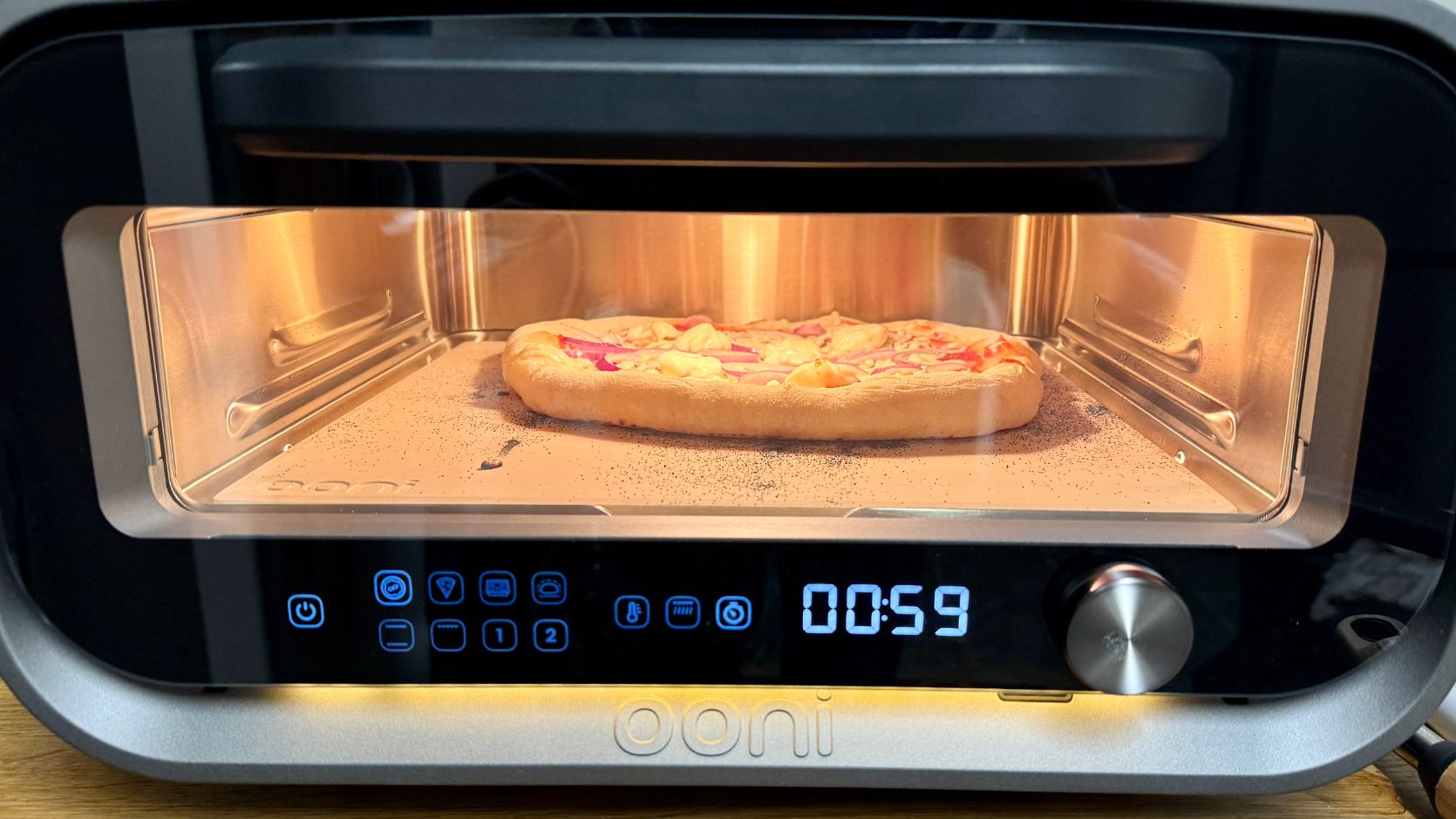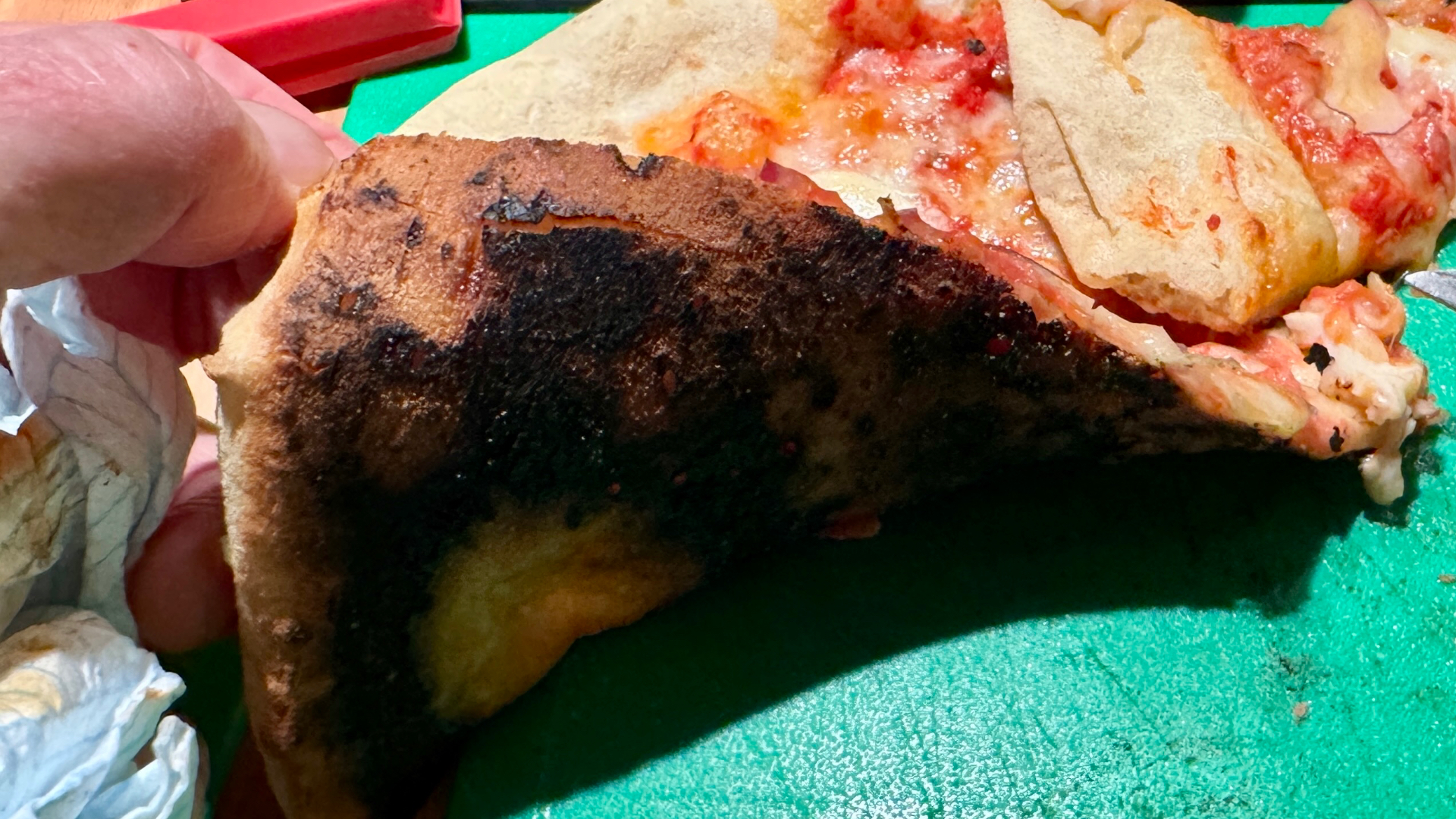
Welcome to T3’s review of the Ooni Volt 2, a 12-inch indoor electric pizza oven with smarts aplenty.
When Ooni launched its first consumer-based pizza oven way back in 2012, it transformed home pizza making and almost singlehandedly created a new outdoor cooking category. What began as a small crowdfunded idea – a compact, wood pellet-fired oven that could reach restaurant-level temperatures – has since grown into a global brand with mass market appeal. And rightly so, because I’ve reviewed about 80% of the UK company’s products to date and they’ve all performed exceptionally well at bringing genuine restaurant-style pizza into the home.
It should be mentioned that pizza baking isn’t anywhere near as easy as slapping some burgers onto the best barbecue – there’s a steep learning curve involved, from proofing, preparation and base moulding to careful launching and monitoring of its cooking progress every second of the way. Not to mention the huge amount of kitchen mess this cooking method entails. But fear not because I’ve created a handy guide on how to cook pizza at home, replete with loads of tips and short cuts to creating the perfect home-baked pizza without any disasters.
I was a huge fan of Ooni’s first electric model, the Volt 12 – which deservedly holds a lofty spot in T3’s guide to the best pizza ovens – so it will be interesting to see how well this radically updated and much more compact model fares against its outgoing stablemate, and whether its onboard smarts are a genuinely useful step in the right direction or an overly complicated hindrance.
Ooni Volt 2 review: price and availability
The Ooni Volt 2 retails at £499 and is available in UK from Ooni, John Lewis & Partners and Lakeland. If you live Stateside, consider visiting Ooni direct or Amazon where this oven sells for $699.
Ooni Volt 2 review: design

The first thing that strikes you on lifting this heavyweight machine out of the box is how much smaller it is than its predecessor, the Volt 12. Where the earlier Volt 12 measured 62cm in depth, 53cm in width and 28cm in height, this one clocks in at a much more svelte 54.5cm in depth, 44cm in width and 26.3cm in height. While its reduced depth and height aren’t of much consequence, the width reduction of 9cm is a major bonus because it takes up far less space on a worktop.
Available in dark grey or white, the Volt 2’s squared styling with rounded edging is more aesthetically pleasing, too, and on par with products from the likes of Sage, Smeg and Dualit. For instance, I love the stylish downlighting at the front when you first turn the unit on round the back. Likewise, the large glass panel and bright internal lamp provide an excellent view of the pizza while it’s bubbling away.
This model is designed for 12-inch pizza bases and ships with a 13-inch cordierite stone to allow for any size variations when shaping the dough base. Like all electric ovens, it comes with two curly heating elements – one below the stone for creating a crispy base and one above for cooking the ingredients and crisping the upper crust. It also ships with a wire rack for grilling vegetables etc. However, it’s imperative that you don’t put any ingredients on the naked rack or the juices will fall through seriously taint the stone below. Place a ramekin dish or baking tray on the rack instead.
Ooni has done away with some of the manual controls that featured on the Volt 12 and opted for an automated cooking system called Pizza Intelligence, which you can read more about in the Features chapter below. In essence, a row of touch-sensitive controls along with a push-to-select thumb wheel now replace the original’s three control dials. The idea behind it is to take the guesswork out of complicated pizza settings and make it easier for novices to get a handle on their first cook.
Ooni Volt 2 review: features

As mentioned above, the new Volt 2 uses Ooni’s an intelligent adaptive control system that, according to Ooni, ‘adjusts temperature, heat balance and intensity in real time to support consistent, high-quality pizza bakes’.
The Volt 2 comes with three main pizza-making modes – Neapolitan, Thin & Crispy (New York) and Pan Pizza – along with a new 30˚C proofing mode, an Oven mode for cooking frozen pizzas at 250˚C, a Broil/Grill mode for grilled sandwiches and vegetables and two Custom Presets for setting your preferred balance of temperature and heat distribution.
Each preset has a variable temperature range that can be adjusted using the main control dial. For instance, the Neapolitan setting ranges from 375˚C to 450˚C (710-850˚F) with a default temp of 430˚C, Thin & Crispy from 300˚C to 370˚C (570-700˚F) with a default of 350˚C and Pan Pizza from 230˚C to 295˚C (450-560˚F) with a default temperature of 275˚C.
You’re also offered touch buttons for three other modes you’re likely to use on a regular basis and these are overall oven Temperature control, a Timer and a Crisping Intensity scale of 1 to 5 to adjust the consistency and texture of the upper crust and, when set higher, to better cook the ingredients. Finally, there’s the Boost activation which turns the top element to full bore for a short period of time. To initiate this function you simply press and hold the main dial and wait until the light turns solid green.
I’ll be honest and say that I’m not especially keen on having the oven decide what temperature or temperature balance is best at any given time and I really do miss the ability to adjust the heating element below the stone because, as I found out in my first test, the preset temperature of the stone for the Neapolitan option is a mite too over zealous.
Ooni Volt 2 review: performance




Given that Neapolitan is far and away my favourite type of pizza, that was the first setting I opted for. I simply tapped the Neapolitan button and waited about 25 minutes for it to reach its predetermined 430˚C. While doing this I used my favourite pre-made dough balls from Peddling Pizza (sold on the Gozney website), some grated mozzarella and buffalo mozzarella balls, a few slices of chorizo and a good dose of seasoned Mutti pizza sauce.
I launched said pizza into the oven, checked that the time was correctly preset at 1’30” and watched like a hawk. True to form, the outer edges started erupting beautifully, slowing turning a light brown with plenty of leopard spots. I turned the pizza about three times but what I didn’t check was the base. Oops, failure. The base was as black and hard as a council drain cover which suggests to me that the preset for the lower heating element was set at too hot a temperature.
So I tried again, this time manually lowering the whole temperature of the oven to 400˚C instead of 430˚C. This made a big difference even though I had to adopt Peddling Pizza’s Adam Atkins’ method of holding the pizza above the stone using a pizza turning peel to help cook the ingredients and crisp up the edges a bit quicker. I consider the second pizza a huge success.
I then tried an alternative Neapolitan method using Marks & Spencer’s frozen dough balls (not bad) and programmed my own preset at 400˚C with the Crispness function at number 5, the highest setting. However, this time I also initiated the Boost function of the top element and the results were exceptional, with a perfectly cooked top and just the right amount of crispness on the base with absolutely no burning. This will be my go-to setting from now on. A 5-star result.
Finally, I tried a pre-made off-the-shelf M&S pizza and chose the Oven mode with its temperature range of 100˚C to 250˚C. I chose 220˚C and left it in the oven for about 8 minutes less than advised and I was pleasantly surprised at how well it cooked, from base to top. Another 5-star result.
I have loved using this oven but there’s definitely a bit of a learning curve involved and some experimentation, too. As I’ve said above, I miss having a dial to manually balance the temperatures between the stone and top elements and found it quite tricky to find the optimum balance. While I’m now very happy with my own saved preset, I do think that the stone’s default temperature for the Neapolitan function is perhaps a little too high but then again, much of it depends on the water and sugar consistency of one’s dough.
What I do know is that, while this model falls just shy of a full five-star rating, I still wholeheartedly recommend it. Yes it may take a couple of baking sessions to dial in your preferred setting but once set, it’s plain sailing all the way.
Ooni Volt 2 review: verdict

For pizza lovers wanting restaurant-style crusts in the home, the Ooni Volt 2 hits the spot with speed, great versatility and advanced features like its Pizza Intelligence adaptive control system. Nevertheless, don’t underestimate how fast things can go wrong because the base of the pizza is vulnerable to burning if the stone is too hot or if the top element hasn’t caught up. With practice you will inevitably master it, but it’s not totally hands off.







